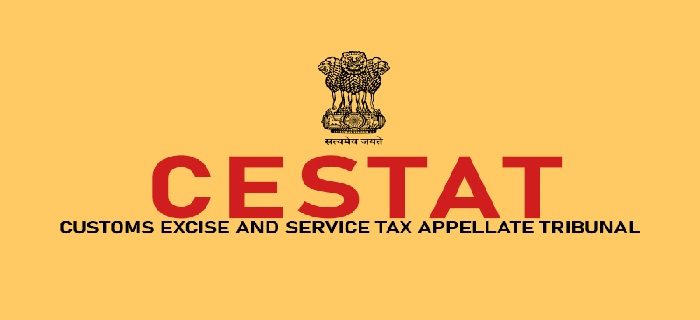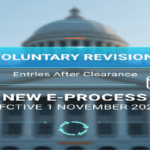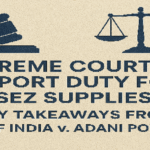1. Background of the Case
M/s Simran Exports, a Delhi-based exporter, had exported garments in 2009 declaring an FOB value of ₹1.06 crore and claimed duty drawback. Later, the Directorate of Revenue Intelligence (DRI) alleged that the goods were grossly over-invoiced to avail ineligible drawback. Based on this allegation, the adjudicating authority ordered confiscation of the goods (though already exported), recovery of drawback with interest, and penalties under sections 114 and 114AA of the Customs Act, 1962. The Commissioner (Appeals) upheld the order, leading to the present appeal before CESTAT.

2. Key Issue Addressed
The Tribunal was primarily tasked with deciding:
- Whether drawback can be recovered by altering the assessed shipping bill values in proceedings under Rule 16/16A of the Drawback Rules.
- Whether goods already exported could be confiscated under section 113 of the Customs Act.
- Whether penalties under sections 114 and 114AA were sustainable in this case.
3. Arguments from Both Sides – Appellant (M/s Simran Exports)
- Statements recorded under section 108 were unreliable and not tested as per section 138B.
- Customs had cleared the goods, and banks issued BRCs confirming receipt of export proceeds.
- Once exported, the goods ceased to be “export goods” under section 2(19), and hence confiscation under section 113 was invalid.
- The recovery of the drawback was not justified, as the shipping bills were duly assessed and not challenged through proper legal channels.
Revenue
- Exported garments were of inferior quality and heavily over-invoiced (20 times higher than true value).
- Evidence from invoices submitted to Delhi Chamber of Commerce (DCC) proved lower valuation.
- Remittances were irregular, delayed, and from unrelated parties, thus not genuine sale proceeds.
- Penalties under sections 114 and 114AA were justified as false documents were used to claim undue drawback.
4. Tribunal’s Findings
- Statements under section 108 were not admitted in evidence as section 138B procedure was not followed.
- The only reliable evidence was the DCC invoices showing much lower values, but even then, drawback could not be recovered by altering assessed shipping bills in Rule 16/16A proceedings.
- The Tribunal relied on Jairath International v. Union of India (2019 P&H HC) which held that drawback recovery proceedings are in the nature of execution proceedings and do not permit reassessment of export value.
- Since BRCs were issued by the bank, the remittances were deemed valid unless cancelled.
- Goods already exported cannot be confiscated under section 113, as the law applies only to “export goods” awaiting shipment.
- Consequently, penalties under sections 114 and 114AA were unsustainable.
5. Final Decision
The Tribunal set aside the order of the Commissioner (Appeals). It held that:
- Drawback cannot be recovered in this case.
- Exported goods cannot be confiscated.
- Penalties under sections 114 and 114AA are not sustainable.
- Accordingly, the appeal was allowed with consequential relief to the appellant.
6. Implications of the Judgment
- For Exporters: This judgment strengthens the position that once shipping bills are assessed and BRCs issued, drawback recovery cannot be pursued merely by reassessing values in execution proceedings.
- For Customs: The ruling limits the department’s ability to revisit valuations in drawback cases unless done through proper legal mechanisms such as appeal under section 128 or reassessment at the time of export.
- For Industry: It provides certainty that exporters will not face retrospective challenges to duly assessed drawback claims, except through statutorily defined routes.
- For Banks and RBI: It underscores the pivotal role of banks in certifying the realization of export proceeds through BRCs.
7. Conclusion
This CESTAT ruling reiterates two key principles: (i) once export goods are assessed and shipped, their valuation cannot be reopened in drawback recovery proceedings; and (ii) “exported goods” fall outside the ambit of confiscation under section 113. It ensures predictability in export transactions and safeguards exporters against arbitrary post-export reassessments. However, it also highlights the need for due diligence by authorities at the time of export clearance itself.
Authored by CA Abhishek Kumar and this article presents his independent interpretation of the law in light of the CESTAT order. For further discussion, he can be reached at abhishek@osganconsulants.com or on Mobile No. 9891512285
Disclaimer:
This article is a general interpretation of the CESTAT order by the author for academic and informational purposes only. It does not constitute professional advice or a legal opinion. Readers are advised to seek consultation before taking any decisions based on the contents of this article.





